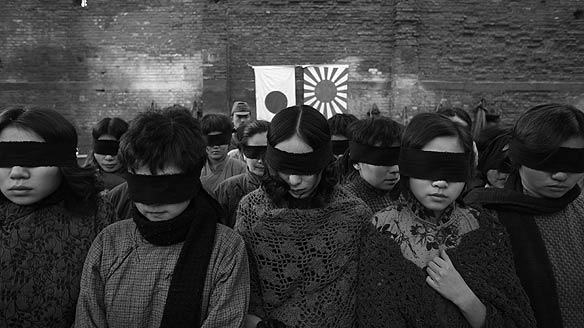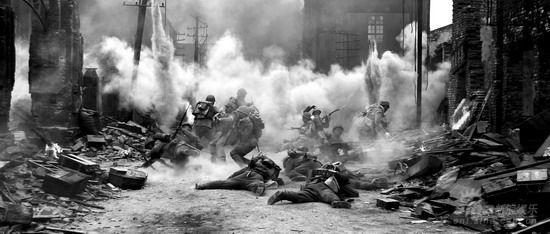
Movie Review: City of Life and Death
Lu Chuans City of Life and Death, which made its world premiere in Toronto, takes us back to the Japanese siege of the Chinese city of Nanking in 1938, which killed more than 300,000 Chinese. The butchery of that campaign is the symbol of the criminality of Japans plan to conquer East Asia.
Its not on the same scale as Germanys industrialized slaughter of the Jews, or of the three-year siege of Leningrad, and there is not a firestorm from the air like the bombing of Dresden. The Japanese invaders, with a head start on their march southward to rewrite the map of Asia, bombed the walled city of Nanking. “Rape” is the way historians have characterized it. Survivors were shot or bayoneted. Soldiers who surrendered were usually slaughtered, sometimes buried alive, as we see in City of Life and Death. The gleeful victors raped women with impunity.

City of Life and Death
Lu Chuans black-and-white epic marches through unspeakable brutality, sometimes through the eyes of the Japanese, who seem indifferent to the suffering that they cause. Brave fighters led by a charismatic officer played by Liu Ye are outnumbered and outgunned, women who are not raped on contact are forced into prostitution, and children are slaughtered.
Nanking has been the subject of countless documentaries. As the story of the siege advances through extended vignettes, City of Life and Death brings poignancy to what otherwise might be a numbing body count. Lu Chuans characters show us the dread of a defeated people facing certain death. Theres barely a dose of romance in this tale of fighting against the worse of odds.
Critics have compared City of Life and Death to an American World War II combat films, but those films never effectively got inside the experience of a people under siege. However surprised the US was at Pearl Harbor, Americans were spared the ordeal of the bombardment of civilians.

City of Life and Death
Yet Lu Chuan has made a movie that is much closer to a Soveit war epic, minus the strident revolutionary rhetoric. There is sacrifice at every level – and from every class, another departure from agitprop lockstep – plus solidarity against all odds from the principal Chinese characters, and nobility of spirit. Prefiguring the eventual victory over the Japanese, as soldiers are machine-gunned en masse, they die declaring that China will not be defeated.
Scenes in the film did indeed happen, although the carnage in Nanking was far worse than what Lu Chuan puts on the screen, all ably shot by an extraordinary director of photography, Cao Yu. Like the epics of socialist realism, this weapon of mass instruction doesnt let too much blood risk demoralizing the audience. (If future sacrifices need to be made, the filmmaker seems reluctant to scare his public off.)

City of Life and Death
Post-war China, like most countries on the winning side in World War II, turned the suffering under the Japanese and the eventual victory into a myth that gave the country a common purpose – even though the Chinese were fighting among themselves. That myth has had a long life, largely because the Chinese have used it to distance attention from Beijings treatment of its own people.
Bear that in mind when watching City of Life and Death. The saga is a rousing evocation of that myth, as it plunges you into the horror of history.
